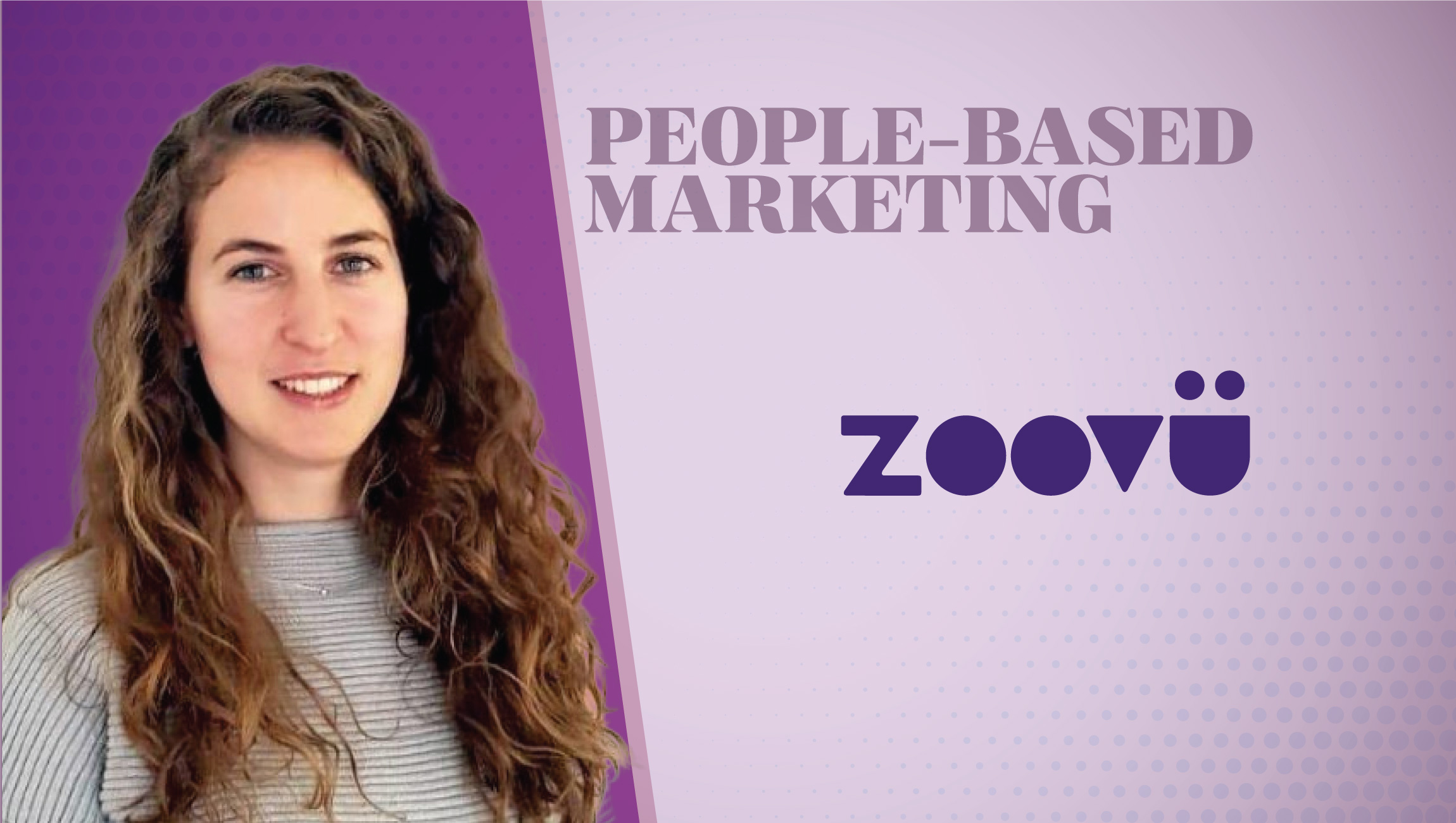Tell us a little about Zoovu and your role within.
Zoovu is a leading conversational marketing platform that delivers authentic human-level engagements across Chatbots, websites, and in-store. Zoovu provides real-time insights to help brands and retailers understand their consumers to grow sales and conversion. Our focus is to provide brands with the tools to better engage with their customers, providing an engaging, seamless brand experience.
As the SVP of Marketing, I am responsible for expanding and growing the company’s global presence. Over the past year, building our brand awareness in a creative, powerful way across our key verticals has been my goal. A critical component of my role is to supervise lead generation and acquisition helping to enable our sales team with content and material that will grow our business and partnerships.
Can you explain the choice overload challenge that shoppers face?
Choice overload is what happens when we’re faced with more possibilities than we can clearly or easily comprehend. About 56% of consumers have abandoned a website purchase because it was just too difficult to find the right product. Shoppers are faced with the concept of choice overload due to the growing diversification of products and goods available to them. The rise of digital has made choice overload even more prevalent due to the lack of support provided by brands during the online shopping experience. Even though consumers may think they are product experts, they aren’t and don’t speak the same language as brands and retailers who know how to effectively navigate through their website. If a brand provides product filters and technical product descriptions this often does not help shoppers to choose or even enhance the overall shopping experience
It is evident that there is a disconnect between the brand and the consumer. Consumers need help to decipher what the brand and or retailer is saying and providing. This is the challenge that brands need to tackle in order to remove this choice overload difficulty faced by shoppers and up-level the experience in a competitive marketplace.
What are retailers/brands doing to help tackle the issues faced by consumers today? How are brands/retailers leveraging new technologies and solutions to enhance the Customer Experience?
I believe that brands understand that there is a disconnect when it comes to the shopper experience. Yet, retailers are struggling to find the solution that is right for their business and how to tackle the challenge in an affordable manner. Brands are turning to different technologies and solutions, but they first need to determine just which platform is right for their unique challenge, brand, and customer.
There are a variety of technologies and solutions that are available on the market today. Companies are looking for ways to engage with shoppers and make it easier for brands to communicate and bring shoppers to a point of purchase. For example, Pinterest boards provide shoppers with the inspiration that they need to help them make a final purchase decision. Similarly, Social Media leader, Instagram announced earlier this year that it was enabling in-app checkout for shoppable posts. This provides a more frictionless experience and removes too many clicks or prevents leaving the application to make a purchase.
Another technology that brands have started to implement is augmented reality and smart mirrors that provide an interactive experience. The smart mirrors are “smart” because they enable a likely indecisive shopper the ability to try on or experience the look, or hairstyle before they jump in with two feet. While a non-technical route, brands should be resurfacing the age-old, community feel. Shopper’s like to feel important and that their sale is the most important, so a brand leverages influencers and a loyalty program will naturally drive conversions and sales. Any form of communicating and getting in touch with a consumer, big or small, is vital to a customer coming back and choosing a brand over another.
Are there technologies that brands can leverage both in-store and online?
There are many new existing in-store technologies. Some of my favorites are Smart Mirrors, which allow customers to test different outfits without having to change their clothes. Experts predict that Augmented Reality in-stores will work $130 billion by 2020. This type of technology also exists at home for those online shoppers. Amazon recently filed a patent for an AR mirror that would enable customers to test clothes from their home.
The launch of their Amazon Go store, with “self-checkout” and the perks that come with shopping easily, is one key proof point. Grocery shopping can be a daunting task for many, with lines and the endless checklist of items to purchase, but with the emergence of an AI shopping cart that enables a customer to scan an item through a screen on the front of the cart, it doesn’t seem so bad.
The number of in-store and online technologies is, however, a little more limited, but on the rise. In some stores, such as Alibaba, customers can scan QR codes in-stores to gather information about the product. They also have the option to purchase via the application, which makes the entire experience seamless and convenient.
Digital Assistants can be leveraged both in-stores and online. They provide that authentic, quick and informative experience that shoppers crave. Digital Assistants, also make sure to work with a customer to know what works best for them and direct them in the right location, whereas a Sales Associate can often be less than helpful.
How are technologies like Chatbots and Voice Commerce Solutions helping to improve the shopping experience?
Chatbots have previously had a heavy emphasis on Customer Support. Now chatbots are also being used to provide a more personalized experience for consumers during the buying process, guiding them from the browsing state to purchase. A chatbot can be leveraged for these functions:
-
- Seamless live chat – Consumers can engage with a chatbot the same way they would with a live customer support employee.
- A chatbot can provide a 24/7 customer service offering that is less stressful for a customer.
- Facebook Messenger as a way to interact where customers are and help guide them through their buying journey, which is unique to them.
- The technology behind chatbots is also able to remember and store previous conversations that enable a brand to provide a curated personalized recommendation at all times across the entire product range.
Additionally, Voice e-commerce solutions are mostly focused on repurchasing rather than selling, due to the lack of Visual Product representation available. However, it is also a great way to engage in brand experiences that redirect consumers to other digital channels. Voice is perfect for brands who want to provide a convenient and omnichannel experience for their consumer base.
Do you think customers are receptive to brands leveraging technologies to better connect with them?
Brands are very receptive to technology providing them with the tools to better connect with shoppers. Consumers want more personalization and convenience when shopping and it’s up to brands to provide that, especially if they want to stay ahead of the curve.
What is one thing that brands still don’t get right?
Brands are still struggling to cater to consumers’ needs at the point in time to which they decide ‘I want to buy this product.’ Otherwise known as solving the ‘I want moment.’ It’s critical that a brand knows how to best guide their shoppers to the right landing page, or a matching accessory to upsell. Rather than talking in specs, or product descriptions, brands need to find a way to communicate and engage with shoppers rather than push content and information that is overwhelming or underwhelming. Knowing the format in which your customer wants to be reached is key.
What advice would you give to Marketing Leaders to tackle this?
Brands that are focused on a customer-first strategy will always win. Thinking in terms of what the consumer wants rather than how to get their product out there makes a difference. Leveraging authentic interactions with a customer and providing a Personalized experience from browse to point of purchase is where marketers need to be thinking. Leveraging technologies like Zoovu’s Conversational Marketing platform can help tackle this and ensure the marketing strategy is consumer-centric and create lifetime customer loyalty and superior Customer Experience.
As SVP, Sarah is responsible for Zoovu’s global Product Marketing, Branding, Positioning and Marketing functions.
Since joining the team, Sarah has successfully helped to facilitate the company’s close of its Series B funding round in early 2019. Prior to this role, she has held Product Marketing roles for various successful companies in the MarTech and Retail spaces, previously working in Product Marketing at Selligent and SmartFocus.
zoovu is the ultimate AI-Conversational Marketing platform. We help brands and retailers grow sales and increase conversion across chatbots, website, and in-store. Our AI-driven digital assistants interact with billions of consumers every day to help find the perfect product.
More than 200 brands use zoovu digital assistants today, including Amazon, Coty, Whirlpool, and Canon. Headquartered in New York and London, zoovu operates worldwide in 1000+ categories and all languages.













Comments are closed.